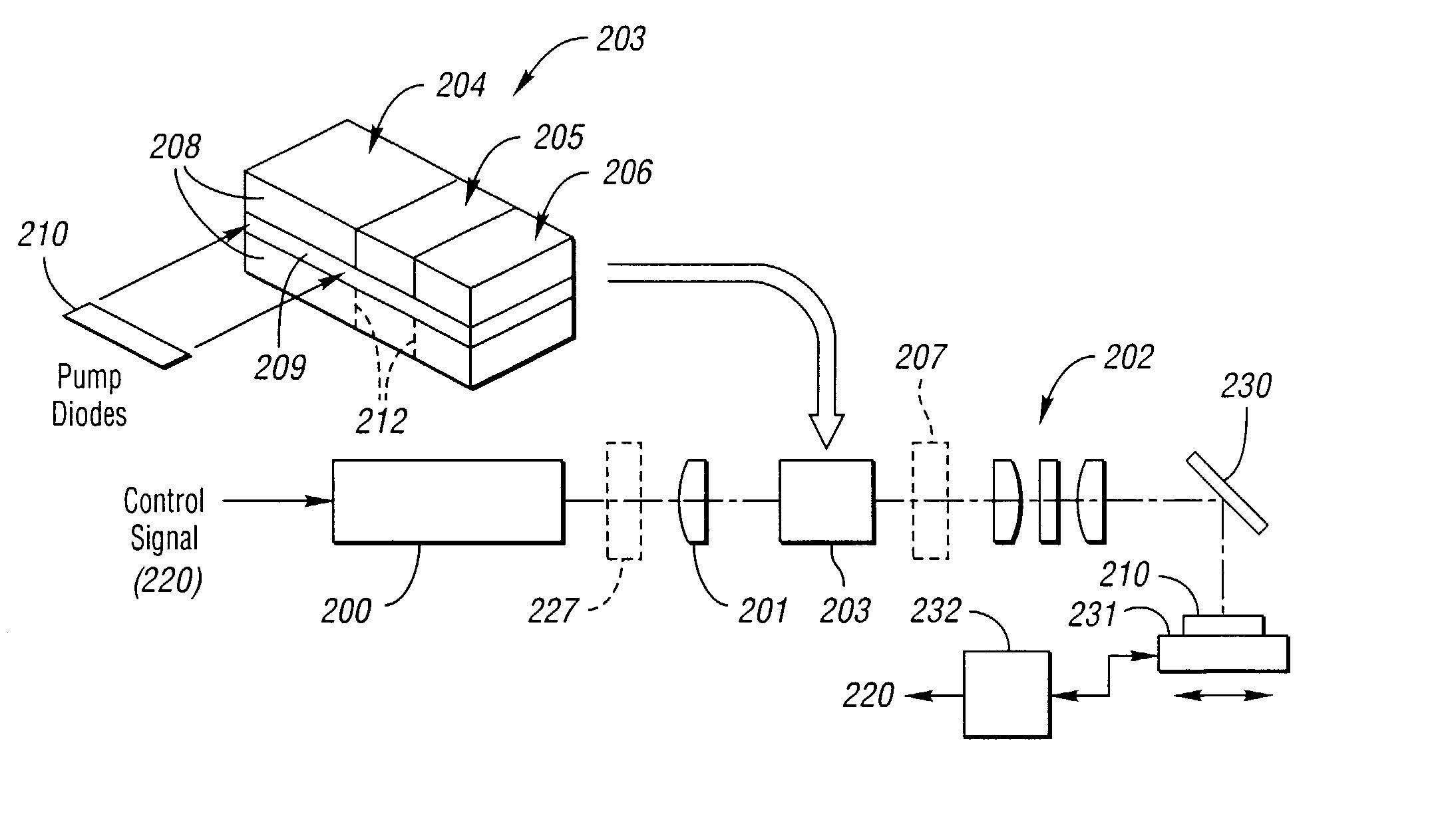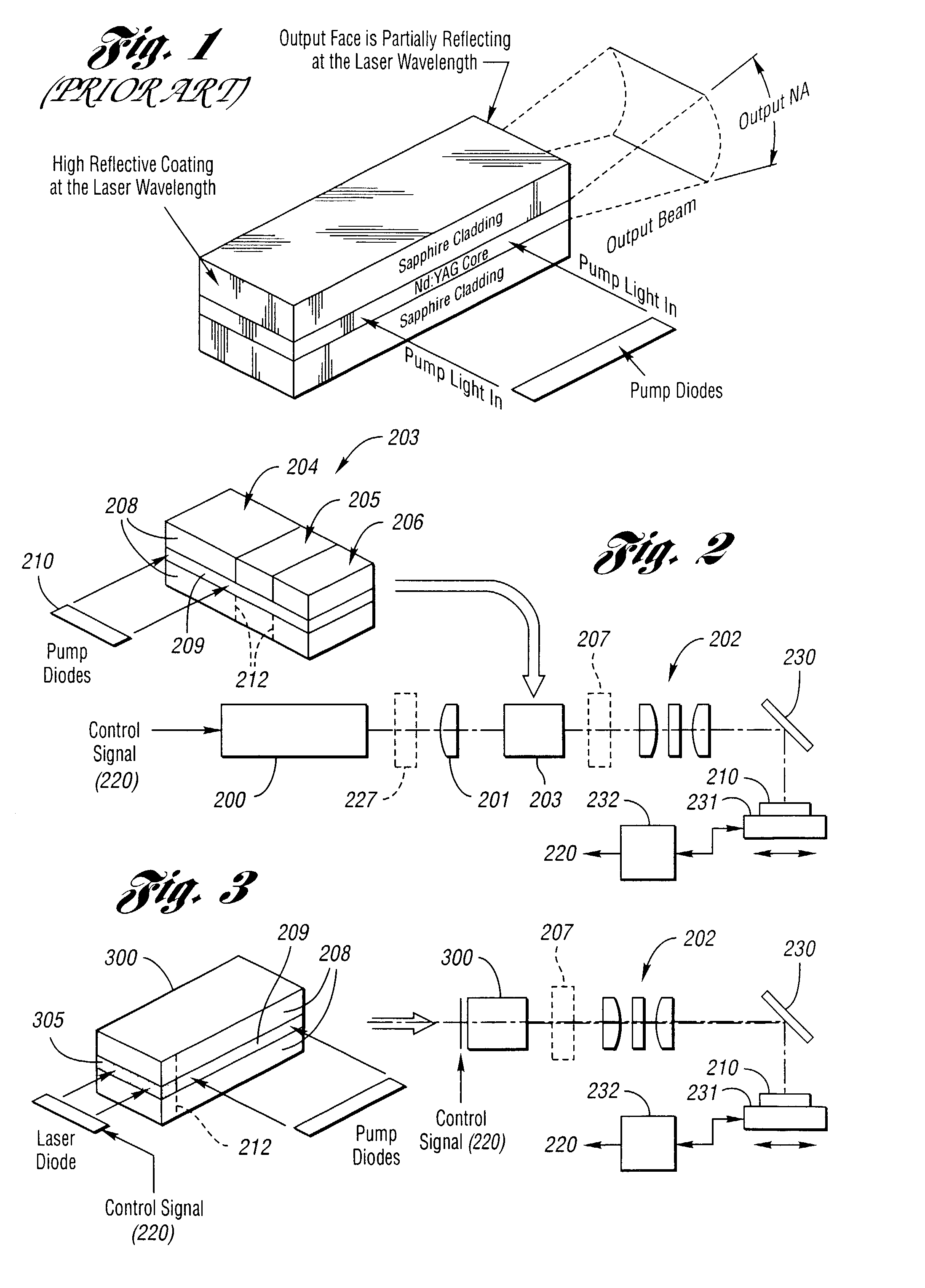Waveguide architecture, waveguide devices for laser processing and beam control, and laser processing applications
a waveguide and laser processing technology, applied in lasers, gas laser construction details, lasers, etc., can solve the problems of high cost of laser diodes, fiber lasers offer good power scalability but limited at high power, and it is difficult to achieve the requirements of rods, slabs, and thin disk lasers
- Summary
- Abstract
- Description
- Claims
- Application Information
AI Technical Summary
Benefits of technology
Problems solved by technology
Method used
Image
Examples
second embodiment
[0120]In an alternative embodiment, top 708 and side 709 views which are shown in FIGS. 7D and 7E, the planar waveguide is configured to make at least one fold 710 in the transverse direction and the birefringent cladding 711 is contacted / bonded to a side face of the planar waveguide structure where the beam is reflected to create a fold. In this second embodiment if the birefringent cladding is a uniaxial crystal and the angle of incidence at the fold is Θ1, then the refractive indices of the birefringent cladding should satisfy nocriticale or necriticalo where ncritical=ncore cos(Θ1).
[0121]Preferably, the polarizer is integrated directly into a monolithic device which may have separate gain and polarization sections. However, the waveguide polarizer may be used to produce a polarized output beam wherein an input beam is coupled into the core with an imaging system, for example.
[0122]It is to be understood that these embodiments for producing linear polarized outputs and various ot...
first embodiment
[0149]Refer to FIG. 9-A. In a first embodiment, an electro-optic waveguide with transverse electrodes is formed by building a sandwich of three layers 901,902,903 of an electro-optic material such as Lithium Niobate, LiNbO3. The thickness of the central core layer 902 is typically in the range of 5–200 microns. The outer cladding layers 901,903 have a typical thickness in the range of 5–50 microns. The width and length of the device are application dependent. All three layers have their crystal optical axis 925 (the +z axis) parallel to the direction of propagation in the waveguide. The outer two layers have their +x and +y crystal axes oriented in the same direction. The +x and +y crystal axes of the central layer are rotated 180° about the +z axis relative to the outer two layers. Electrodes are created on the top and bottom surfaces of the structure 904 by coating them with an electrically conducting coating or by contacting electrically conducting materials to these surfaces.
[01...
PUM
| Property | Measurement | Unit |
|---|---|---|
| length | aaaaa | aaaaa |
| length | aaaaa | aaaaa |
| power levels | aaaaa | aaaaa |
Abstract
Description
Claims
Application Information
 Login to View More
Login to View More - R&D
- Intellectual Property
- Life Sciences
- Materials
- Tech Scout
- Unparalleled Data Quality
- Higher Quality Content
- 60% Fewer Hallucinations
Browse by: Latest US Patents, China's latest patents, Technical Efficacy Thesaurus, Application Domain, Technology Topic, Popular Technical Reports.
© 2025 PatSnap. All rights reserved.Legal|Privacy policy|Modern Slavery Act Transparency Statement|Sitemap|About US| Contact US: help@patsnap.com



